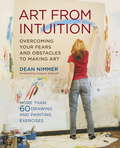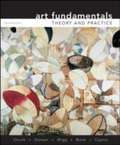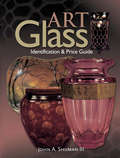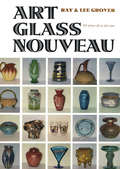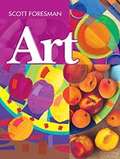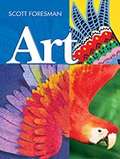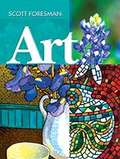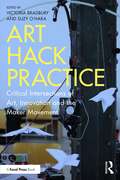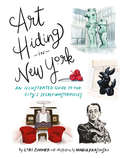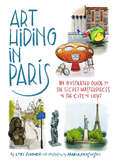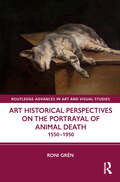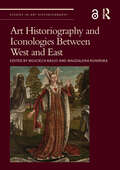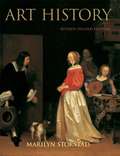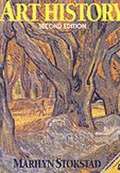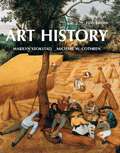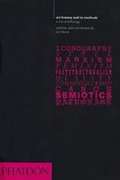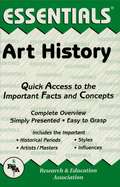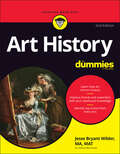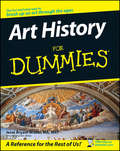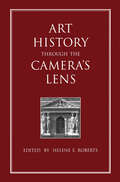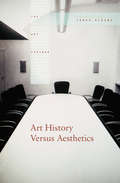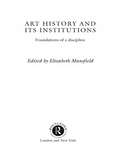- Table View
- List View
Art From Intuition
by Dean NimmerPractical self-help for artists who want to free their creativity. Art from Intuition offers artists everywhere a unique system for freeing their own creative intuition, the sixth sense that directs an artist's drive and work. By letting go of the self-criticism, doubt, and insecurity that discourage artmaking, artists will be able to soar to new heights of creativity. More than 60 practical exercises take the reader from the most basic intuitive art to more sophisticated techniques. Each exercise, supported by step-by-step instructions, is accessible to artists at every level, and the exercises can be done in any order. After each chapter, readers are encouraged to follow up by evaluating their drawings or paintings to see how they reflect their own personal goals. Works of art by students and contemporary artists exemplify how exciting and how productive a freer, more intuitive approach to making art can be.From the Trade Paperback edition.
Art From The Sacred To The Profane: East
by Frithjof SchuonThis edition of renowned philosopher Frithjof Schuon&’s writings on the subject of art, selected and edited by his wife Catherine Schuon, contains over 270 photographs-200 color and 70 black and white. Keith Critchlow writes, &“This beautiful book … has the broadest coverage of any of the books on art that this writer has seen in forty years of teaching art and architecture.&” Frithjof Schuon, the foremost representative of the traditionalist school of thought, presents the universal principles and criteria with which to discern sacred from profane art, and traditional from merely &“religious&” art. He then deals with the spiritual significance of the artistic productions of Christianity, Islam, Hinduism, Buddhism, and the Far-Eastern world. Also covered are the subjects of beauty and the sense of the sacred, the crafts, poetry, music, dance, dress, and ambience.
Art From the Ashes: A Holocaust Anthology
by Lawrence L. LangerArt from the Ashes provides the most far-reaching collection of art, drama, poetry, and prose about the Holocaust ever presented in a single volume. <p><p>Through the works of men and women, Jews and non-Jews, this anthology offers a vision of the human reality of the catastrophe. Essays by familiar writers like Primo Levi and Elie Wiesel accompany lesser-known efforts by Yankiel Wiernik and Frantisek Kraus; stories by Tadeusz Borowski and Ida Fink join fiction by neglected authors such as Isaiah Spiegel and Adolf Rudnicki; and extensive selections have been chosen from the works of six poets--the renowned Paul Celan, Nelly Sachs, and Abraham Sutzkever among them. <p><p>Each selection (except for self-contained excerpts from ghetto journals and diaries) appears here in its complete form. Langer also includes in their entirety a novel by Aharon Appelfeld, a novella by Pierre Gascar, and Joshua Sobol's controversial drama Ghetto. In addition, this volume features a visual essay in the form of reproductions of twenty works of art created in the Terezin concentration camp.
Art Fundamentals: Theory and Practice (11th Edition)
by Otto Ocvirk Robert Stinson David L. Cayton Philip Wigg Robert BoneThe original text that set the standard for introduction to art courses across the country,Art Fundamentals has guided generations of students through the essential elements of art as well as the rich and varied history of their uses. This eleventh edition has been carefully revised to expand and clarify concepts throughout the text, while adding new material on developing ideas, critical thinking, and time and motion.
Art Glass Identification & Price Guide
by John Shuman IIIDaring designers such as Louis Comfort Tiffany and Reneacute Lalique are remembered for their intricate pattern creations with glass that pushed the evolution of design. These entrancingly beautiful masterpieces of yesterday are commanding high prices in today's antiques and collectibles marketplace. Author John Shuman Ill gives art glass collectors the helpful advice they need - from bidding techniques at auctions and detecting fakes and frauds, to protecting valuable. With the aid of this identification and price guide they'll obtain a collection they can be proud to display. Valuable information and current market prices are included for Baccarat, Custard Glass, Durand Art Glass, Fairy Lamps, Kimball Glass, Lalique, Loetz, Tiffany, and much more. Readers will confidently identify collectible pieces with more than 300 color images, illustrations, and vintage advertisements. They'll peruse original advertisements from sale catalogues and marvel at the progression of some of the most highly sought after art glass pieces from popular manufactures.
Art Glass Nouveau
by Ray Grover Lee GroverArt Glass Nouveau was originally published by Tuttle Publishing in print form in 1967.NEVER BEFORE has there ever been such a rapid and widespread surge of interest in any field of collecting as there now is in discovering the magnificent beauty of colored art glass, the many unique pieces that were produced extensivelyin the United States, Great Britain, and other European countries during the late 19th and early 20th centuries, when this fine art was at its height. And never before has there been such an informative, useful, and thoroughly illustrated book on this subject as this definitive work by Ray and Lee Grover.All of the illustrations are in full color. The book contains 424 plates, 50 of which are full page. The complete description of each piece indicates its size, the type of glass used, its identification marks, the names of the designer and/or producer, when known, and its present owner. While every significant type of art glass produced during this period is covered in the succinct text, the exciting galaxy of 424 plates, interspersed throughout the book, were selectednot only because of their rare beauty and authenticity, but also to show representative pieces, similar to those that are still obtainable. Most important of all in identifying a piece and determining its value, according to the authors, are its color, its shape, and the texture of its surface, to which they constantly give particular attention.
Art Hack Practice: Critical Intersections of Art, Innovation and the Maker Movement
by Victoria Bradbury Suzy O'HaraBridging art and innovation, this book invites readers into the processes of artists, curators, cultural producers and historians who are working within new contexts that run parallel to or against the phenomenon of ‘maker culture’. The book is a fascinating and compelling resource for those interested in critical and interdisciplinary modes of practice that combine arts, technology and making. It presents international case studies that interrogate perceived distinctions between sites of artistic and economic production by brokering new ways of working between them. It also discusses the synergies and dissonances between art and maker culture, analyses the social and collaborative impact of maker spaces and reflects upon the ethos of the hackathon within the fabric of a media lab’s working practices. Art Hack Practice: Critical Intersections of Art, Innovation and the Maker Movement is essential reading for courses in art, design, new media, computer science, media studies and mass communications as well as those working to bring new forms of programming to museums, cultural venues, commercial venture and interdisciplinary academic research centres.
Art Held Hostage: The Battle over the Barnes Collection
by John Anderson"Money, pretension, horrid behavior by cultured people" (New York) --John Anderson's tale delivers it all in fabulously juicy detail. This is the story of how a fabled art foundation--the greatest collection of impressionist and postimpressionist art in America, including 69 Cézannes, 60 Matisses, and 44 Picassos, among many priceless others--came to be, and how more than a decade of legal squabbling brought it to the brink of collapse and to a move that many believe betrayed the wishes of the founder, Dr. Albert C. Barnes (1872--1951). Art Held Hostage is now updated with a new epilogue by the author covering the current state of this international treasure and the endless battle over its fate.
Art Hiding in New York: An Illustrated Guide to the City's Secret Masterpieces
by Lori ZimmerUncover the artistic masterworks hidden across New York City in this charmingly illustrated exploration of one of the world's greatest creative treasure troves.There's so much to love about New York, and so much to see. The city is full of art, and architecture, and history -- and not just in museums. Hidden in plain sight, in office building lobbies, on street corners, and tucked into Soho lofts, there's a treasure trove of art waiting to be discovered, and you don't need an art history degree to fall in love with it. Art Hiding in New York is a beautiful, giftable book that explores all of these locations, traversing Manhattan to brings 100 treasures to art lovers and intrepid New York adventurers. Curator and urban explorer Lori Zimmer brings readers along to sites covering the biggest names of the 20th century -- like Jean-Michel Basquiat's studio, iconic Keith Haring murals, the controversial site of Richard Serra's Tilted Arc, Roy Lichtenstein's subway station commission, and many more. Each entry is accompanied by a beautiful watercolor depiction of the work by artist Maria Krasinski, as well as location information for those itching to see for themselves. With stunning details, perfect for displaying on any art lover's shelf, and curated itineraries for planning your next urban exploration, this inspirational book is a must-read for those who love art, New York, and, of course, both.
Art Hiding in Paris: An Illustrated Guide to the Secret Masterpieces of the City of Light
by Lori ZimmerExplore masterpieces hidden in plain sight, historic artist enclaves, and iconic works of public art in this charmingly illustrated exploration of Paris, from the authors of Art Hiding In New York.Paris is the city of light, the city of love, and the city of more art than you could possibly explore in a lifetime—and not just in museums. Tucked away in tree-lined parks, preserved in world class restaurants, emblazoned on Metro station walls, and hidden in the most unexpected places are masterpieces worthy of the Louvre, if you know where to look! In this whimsically illustrated celebration of Parisian art and artists, author and curator Lori Zimmer highlights more than 100 treasures. From the gorgeous remnants of the Art Nouveau era to the homes of some of the world's most influential artists—including Vincent Van Gogh, Pablo Picasso, and more—to an introduction to the modern masters of urban art, there are endless riches to be explored. Discover art that was hidden for decades inside cafes, shops and even a Belle Époque brothel! Paris will surprise you.Illustrated by artist Maria Krasinski, this book provides curated itineraries for dreaming up your next urban exploration, and is perfect for displaying on any art lover's shelf.
Art Historical Perspectives on the Portrayal of Animal Death: 1550–1950 (Routledge Advances in Art and Visual Studies)
by Roni GrénThis study concentrates on the discourses around animal death in arts and the ways they changed over time.Chapter topics span from religious symbolism to natural history cabinets, from hunting laws to animal rights, from economic history to formalist views on art. In other words, the book asks why artists have represented animal death in visual culture, maintaining that the practice has, through the whole era, been a crucial part of the understanding of our relation to the world and our identity as humans. This is the first truly integrative book-length examination of the depiction of dead animals in Western art.The book will be of interest to scholars working in art history, animal studies, and cultural history.
Art Historiography and Iconologies Between West and East (ISSN)
by Magdalena Kunińska Wojciech BałusThis volume explores a basic question in the historiography of art: the extent to which iconology was a homogenous research method in its own immutable right. By contributing to the rejection of the universalizing narrative, these case studies argue that there were many strands of iconology.Methods that differed from the ‘canonised’ approach of Panofsky were proposed by Godefridus Johannes Hoogewerff and Hans Sedlmayr. Researchers affiliated with the Warburg Institute in London also chose to distance themselves from Panofsky’s work. Poland, in turn, was the breeding ground for yet another distinct variety of iconology. In Communist Czechoslovakia there were attempts to develop a ‘Marxist iconology’. This book, written by recognized experts in the field, examines these and other major strands of iconology, telling the tale of iconology’s reception in the countries formerly behind the Iron Curtain. Attitudes there ranged from enthusiastic acceptance in Poland, to critical reception in the Soviet Union, to reinterpretation in Czechoslovakia and the German Democratic Republic, and, finally, to outright rejection in Romania.The book will be of interest to scholars working in art history, visual studies, and historiography.
Art History
by Marilyn Stokstad David Cateforis Stephen AddissIn tune with today's readers--rich but never effete--this is the art history book of choice for a new generation. Presenting a broad view of art through the centuries, it sympathetically and positively introduces the works of all artists. This includes women, artists of color, and the arts of other continents and regions, as well as those of Western Europe and the United States. The new edition contains even more full-color reproductions, larger images, redrawn maps and timelines, and new photographs and higher quality images. Balancing both the traditions of art history and new trends of the present, Art History is the most comprehensive, accessible, and magnificently illustrated work of its kind. Broad in scope and depth, this beautifully illustrated work features art from the following time periods and places: prehistoric art in Europe; ancient art of the Near East, Egypt, the Aegean, and Greece; Roman and Etruscan art; Jewish, early Christian, and Byzantine art; Islamic art; art from ancient India, China, Japan, and the Americas; medieval art in Europe; Romanesque, Gothic, and Renaissance art; Baroque art; art of the Pacific cultures; the rise of modern art; and the international Avant-Garde since 1945. An excellent reference work and beautiful edition for any visual artist.
Art History (2nd Edition)
by Marilyn Stokstad David CateforisFor two-semester courses in Art History Survey, Global Art History, and for Introductory Art courses taught from a historical perspective. Exceptional in scholarship and pedagogically in tune with the needs of today's students rich but never effete Marilyn Stokstad's Art History is the art history text of choice for a new generation of teachers and students. Presenting a broad view of art through the centuries, it introduces beginning students in a positive and sympathetic manner to the works of all artists. This includes women and artists of color, and the arts of other continents and regions in addition to those of Western Europe and the United States. Balancing both the traditions of art history and new trends of the present, Art History is the most comprehensive, accessible, and magnificently illustrated work of its kind.
Art History (5th Edition)
by Marilyn Stokstad Michael W. CothrenArt History 5th Edition continues to balance formal analysis with contextual art history in order to engage a diverse student audience. Authors Marilyn Stokstad and Michael Cothren, both scholars as well as teachers, share a common vision that survey courses should be filled with as much enjoyment as learning, and that they should foster an enthusiastic, as well as an educated, public for the visual arts. This revision is the strongest and most comprehensive learning program for measuring student progress and improving student success in attaining the outcomes and goals of the art history survey course. Not only does the text address four overarching goals of the survey course, the new MyArtsLab further develops and reinforces these outcomes and skills with market-leading learning tools such as personalized study plans for each student and multimedia assets geared towards addressing different learning styles and abilities, such as chapter audio, student videos, Closer Looks, architectural panoramas and much more. The end result is a complete learning program designed to increase students' success with a personalized, digital and a highly mobile learning experience.
Art History And Its Methods
by Eric FernieApproaches to the history of art are probably more varied - and more debated than in any other branch of history, and a study of different historical approaches is becoming an increasingly important component of many academic courses. This anthology of art-historical writings from the Renaissance to the present day has a particular focus, for key texts have been chosen in which the authors themselves reflects on the nature of their subject and on their own methods of inquiry. Included are texts by Vasari, Winckelmann, Burckhardt, Wolfflin, Panofsky, Gombrich and Pollock, among others. The introduction gives a summary of art-historical methods, and each of the texts is accompanied by a brief commentary which places it in context and discusses the issues it raises. Also provided is a critical glossary of art-historical terms, a brief biography of each of the historians, and a select bibliography.
Art History Essentials
by George Michael CohenREA's Essentials provide quick and easy access to critical information in a variety of different fields, ranging from the most basic to the most advanced. As its name implies, these concise, comprehensive study guides summarize the essentials of the field covered. Essentials are helpful when preparing for exams, doing homework and will remain a lasting reference source for students, teachers, and professionals. Art History highlights the history of art, from the Ancient World to the Twentieth Century. It includes illustrations and photos of Egyptian architecture, Greek sculpture, and Renaissance paintings and sculpture. This book explains the different art movements such as Baroque and Neoclassicism, and describes the kinds of materials that were used to create the various works. This book is an ideal study aid for students who must familiarize themselves with major works of art, how they were created, and the affect they had on world history.
Art History For Dummies
by Jesse Bryant WilderReady to discover the fascinating world of art history? Let’s (Van) Gogh! Fine art might seem intimidating at first. But with the right guide, anyone can learn to appreciate and understand the stimulating and beautiful work of history’s greatest painters, sculptors, and architects. In Art History For Dummies, we’ll take you on a journey through fine art from all eras, from Cave Art to the Colosseum, and from Michelangelo to Picasso and the modern masters. Along the way, you’ll learn about how history has influenced art, and vice versa. This updated edition includes: Brand new material on a wider array of renowned female artists Explorations of the Harlem Renaissance, American Impressionism, and the Precisionists Discussions of art in the 20th and 21st centuries, including Dadaism, Constructivism, Surrealism, and today’s eclectic art scene Is there an exhibition in your town you want to see? Prep before going with Art History For Dummies and show your friends what an Art Smartie you are. An unbeatable reference for anyone looking to build a foundational understanding of art in a historical context, Art History For Dummies is your personal companion that makes fine art even finer!
Art History For Dummies
by Jesse Bryant Wilder MA, MATArt history is more than just a collection of dates and foreign-sounding names, obscure movements and arcane isms. Every age, for the last 50,000 years has left its unique imprint on the world, and from the first cave paintings to the ceiling of the Sistine Chapel, from the Byzantine mosaics of the Hagia Sophia, to the graffiti-inspired paintings of Jean-Michel Basquiat, art history tells the story of our evolving notions of who and what we are and our place in the universe.Whether you're an art enthusiast who'd like to know more about the history behind your favorite works and artists, or somebody who couldn't tell a Titian and a De Kooning--but would like to--Art History For Dummies is for you. It takes you on a tour of thirty millennia of artistic expression, covering the artistic movements, major artists, and indispensable masterworks, and the world events and cultural trends that helped spawn them. With the help of stunning black-and-white photos throughout, and a sixteen-page gallery of color images, it covers:The rise and fall of classical art in Greece and RomeThe differences between Renaissance art and MannerismHow the industrial revolution spawned RomanticismHow and why Post-Impression branched off from ImpressionismConstructivism, Dadaism, Surrealism and other 20th century ismsWhat's up with today's eclectic art sceneArt History For Dummies is an unbeatable reference for anyone who wants to understand art in its historical context.
Art History Through the Camera's Lens (Documenting the Image #Vol. 2.)
by Helene E. RobertsPhotography of art has served as a basis for the reconstruction of works of art and as a vehicle for the dissemination and reinterpretation of art. This book provides the first definitive treatment of the subject, with essays from noted authorities in the fields of art history, architecture, and photography. The essays explore the many meanings of photography as documentation for the art historian, inspiration for the artist, and as a means of critical interpretation of works of art. Art History Through the Camera's Lens will be important reading for students, historians, librarians, and curators of the visual arts.
Art History Versus Aesthetics (The Art Seminar #Vol. 1)
by James ElkinsIn this unprecedented collection, over twenty of the world's most prominent thinkers on the subject including Arthur Danto, Stephen Melville, Wendy Steiner, Alexander Nehamas, and Jay Bernstein ponder the disconnect between these two disciplines. The volume has a radically innovative structure: it begins with introductions, and centres on an animated conversation among ten historians and aestheticians. That conversation was then sent to twenty scholars for commentary and their responses are very diverse: some are informal letters and others full essays with footnotes. Some think they have the answer in hand, and others raise yet more questions. The volume ends with two synoptic essays, one by a prominent aesthetician and the other by a literary critic. This stimulating inaugural volume in the Routledge The Art Seminar series presents not one but many answers to the question; Does philosophy have anything to say to art history?
Art History and Its Institutions: The Nineteenth Century
by Elizabeth MansfieldArt History and Its Institutions focuses on the institutional discourses that shaped and continue to shape the field from its foundations in the nineteenth century. From museums and universities to law courts, labour organizations and photography studios, contributors examine a range of institutions, considering their impact on movements such as modernism; their role in conveying or denying legitimacy; and their impact on defining the parameters of the discipline.
